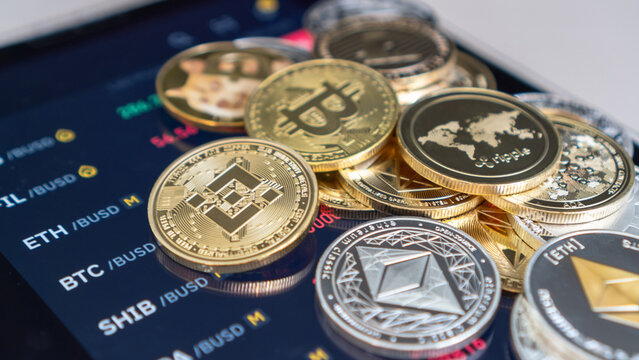Decentralized finance (DeFi) is changing how people interact with money in a way that makes the financial realm more accessible and secure. Under the traditional model, users can find themselves subject to rules implemented on short notice, which at times have erased millions or billions of dollars from their fortunes.
For this reason, the next major technology revolution is being led by a move away from large tech players toward a community-led alternative. Supporting this revolution is ApeSwap, a platform positioned as being among the most connected DeFi hubs available today.
Recently, ApeSwap has added a new NFT-based financial product to its portfolio –– Treasury Bills. Treasury Bills enable users to buy a yield-generating artistic NFT in exchange for selling liquidity in the form of Liquidity Pool (LP) tokens, two combined tokens to buy into the liquidity pool to the protocol. By purchasing this asset on the platform, users can participate in the growth of the ApeSwap ecosystem and the DeFi revolution as a whole.
Within minutes of launching, Treasury Bills exceeded expectations by outselling the discount on the BANANA utility token with LP tokens. The immediate sell-through of NFT Bills with a positive discount showed community demand for sustainable, long-term DeFi growth and fundraising through discounted coin purchases.
Building a plan for long-term DeFi growth
Treasury Bills are designed to align the incentives of the organization, community, and network of partners to focus on sustainable growth. By combining traditional finance (TradFi), DeFi and nonfungible token (NFT) products, ApeSwap opened up a case study in tokenizing a simple agreement for future tokens (SAFTs), as users wrap the agreement for future tokens in an NFT.
“Treasury Bills are a new DeFi product that enables crypto projects to raise funds and create sustainable liquidity. The ApeSwap DAO is using this technology to build a robust LP treasury that belongs to the DEX in perpetuity, gradually reducing its dependence on liquidity rented from yield farmers,” shares ApeGuru, co-founder of ApeSwap.
With each Treasury Bill mint, the discounted rate on BANANA purchases reduces until it gets at or below 0%. The lower discount rate increases the ApeSwap DAO return on BANANA tokens minted, also called “return on emissions”, adding inherent value and building protocol-owned liquidity.
The fundraising approach created by Treasury Bills opens up a new avenue for creating value for DEX communities in the future. The NFT represents one of the first recorded cases of fundraising after an initial token generation event (TGE) without adding more tokens to the environment.
ApeSwap Treasury Bills will be released in two formats: BANANA Bills and Jungle Bills. With BANANA Bills, users can purchase the protocol’s BANANA token at discounted rates, while Jungle Bills will offer discounts on other partner tokens.
Looking at the big picture, the ApeSwap platform aims to support first-time users and DeFi veterans with their goals, primarily using BNB Chain and expanding to multiple top-tier blockchains. ApeSwap features include a combination of a decentralized exchange (DEX), lending protocol, yield farming and staking, and fundraising for new projects. Creating a multifaceted, decentralized financial center is earning the respect of early adopters and the larger cryptocurrency community by working towards a fairer economy at large.
Since the DeFi revolution extends beyond the ApeSwap ecosystem, the platform also supports other projects post-TGE plans. New offerings are then given the foundation for post-launch fundraising.
A foundation for future partnerships
ApeSwap has successfully launched two NFT collections –– NFAs and NFBs –– and was a part of 12 oversubscribed IAOs (initial Ape offerings - ApeSwap’s form of project launches). The protocol is visited by 500,000 monthly users on average and has over $16 billion in total trade volume since its launch. These efforts are enhanced with over 200 partnerships, including their recent one with Gauntlet, the largest financial modeling platform in DeFi.
Looking further at the roadmap, ApeSwap is planning more user interface (UI) updates to further improve the DeFi experience, giving their community more options than ever to control their assets. Near-term goals include improving capital efficiency, continuing to expand the DEX, and adding a fiat on-ramp feature.
Disclaimer. Cointelegraph does not endorse any content or product on this page. While we aim at providing you with all important information that we could obtain, readers should do their own research before taking any actions related to the company and carry full responsibility for their decisions, nor can this article be considered as investment advice.











